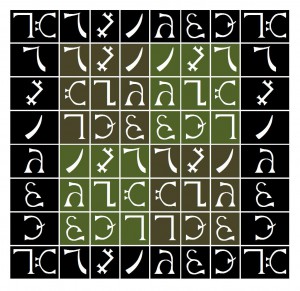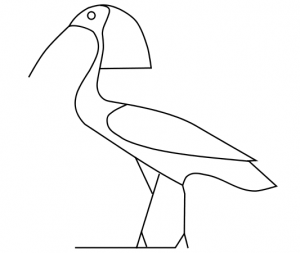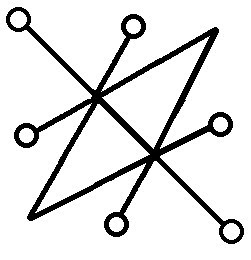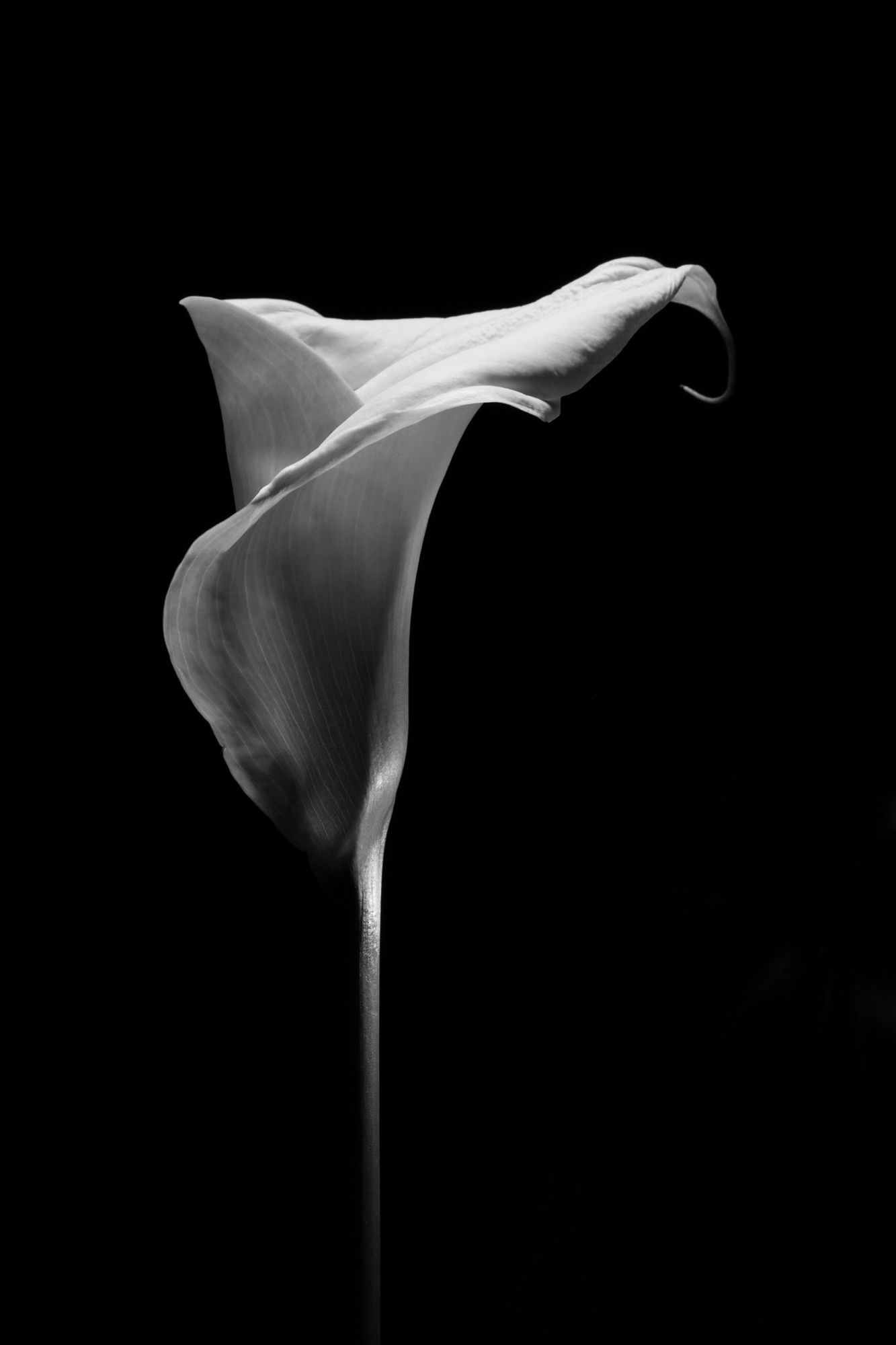Keys of Ocat: Excerpt
Unfortunately one of the things my publisher didn’t do with Keys of Ocat: A Grimoire of Daemonolatry Necromancy, was share an excerpt. So I have decided to do that here. Right now the standard editions are on sale for $30 each! Get a copy of the hardcover before it’s gone. There are also beautiful temple editions available. For TTS members and Sem Priests (exclusively), there is a private seminary edition available. Contact me privately for details. Also, be sure to check out the companion books: Keys of Death, Honoring Death, and Necromantic Sacraments.
THE ALCHEMY OF DEATH
Whether people realize it or not, death is an alchemical transformation. Necromancy itself is a branch of magick all about transmutation. It is a process of distilling the soul, the essence and energy of a person, from the physical body, or bringing that essence forward from the beyond. Likewise, opening and closing the veil (i.e. gates) is a process of dissolution. All of this to bring about the desired end result and manifestation of the magick being worked. Usually the end result of necromancy is to bring forth the dead. Not walking corpses obviously, but the non-corporeal spirits of those who have passed.
This can be accomplished in a number of ways. It does require some patience and some skill as a medium for it to be as potent as it can be. In saying this I do mean that those who aren’t mediums can invoke the aid of the dead for spell work or more formal magicks and will likely be effective in that particular arena, but actually being able to speak with the dead may be out of some people’s reach or require practice to strengthen an existing ability.
Like I’ve said in books past, I believe everyone has at least some clairaudient, clairsentient, or clairvoyant ability to some degree, it’s just a matter if it’s nurtured or not. Other folks are literal beacons for the spirit world (the dead included). Others still will try and try and be unable to tap anything other than their natural empathy. It’s simply the way it works. This book assumes you are a medium or have some talent and know how to use it. I apologize if this isn’t the case. For those wanting to learn or who need to brush up, try So You Want to Be A Medium: A Down to Earth Guide by Rose Vanden Eynden. Yes, I realize that book is not dark and scary or from a dark magick perspective, but it’s useful. There are also exercises in The Complete Book of Demonolatry that might help you.
Now with regard to alchemy, don’t worry, I won’t have you firing up your distillery in the  lab unless you’re inclined that way. In that case see the recipes in the preparation section. Simply grab your herbs and your apparatus, put on your apron, and get to work – you know you want to. Death is as much a spiritual alchemy however. The process of dying, just as the process of death (or accepting death), are both processes in spiritual alchemy.
lab unless you’re inclined that way. In that case see the recipes in the preparation section. Simply grab your herbs and your apparatus, put on your apron, and get to work – you know you want to. Death is as much a spiritual alchemy however. The process of dying, just as the process of death (or accepting death), are both processes in spiritual alchemy.
To better understand the alchemy of death we should probably meander through a few areas just to make sure you, the reader, and me, the author, are kind of on the same page here.
The Parts of the Soul
Perhaps one of the most interesting things to know when studying Daemonolatry Necromancy is how the ancient Egyptians viewed the soul because the soul is viewed very much the same way by many modern Daemonolatry Necromancers of the old school. There are five parts of the soul – the heart, the shadow, the name, the soul, and the vital spark. Each part of the soul plays a vital role in the living person as much as the dead. There are specific practices centered around invoking the dead using each part. Please read the following carefully and take this with you through the rest of the book.
 The heart, also known as the Ib, is the blood passed on from mother to child. This is why, in Daemonolatry, a magician who gives his blood in offering, even in small amounts, is giving something very sacred of himself. The blood is the life. The life passed from parent to child. Some have argued this actually means DNA. Perhaps, but we won’t get into waxing philosophic here. Suffice to say this is, in part, why Daemonolatry is a blood-letting tradition and why blood is viewed as being so important.
The heart, also known as the Ib, is the blood passed on from mother to child. This is why, in Daemonolatry, a magician who gives his blood in offering, even in small amounts, is giving something very sacred of himself. The blood is the life. The life passed from parent to child. Some have argued this actually means DNA. Perhaps, but we won’t get into waxing philosophic here. Suffice to say this is, in part, why Daemonolatry is a blood-letting tradition and why blood is viewed as being so important.
Next is the shadow, or Sheut according to the ancient Egyptians, which is your actual shadow. The shadow concept is actually quite complicated and yet simplistic at the same time. Ancient Egyptians believed the shadow contained the essence of self and that our shadows were servants to Anubis. They stay with us while we’re alive, but take on their own form in our death. The Ancient Egyptians also believed that statues or likenesses of the Gods and the dead were simply shadows (which are a living thing in and of themselves). This is why you’ll notice in some of the formal rites the priests will be cautioned to never turn their back to an altar as it’s considered rude. It’s like snubbing the shadow. Shadows are also the reason libations and offerings are left on altars or shrines dedicated to the spirits. Likewise it’s the reason there are often photographs (i.e. likenesses) placed on the altar when working necromancy with specific spirits who have passed, or simply to honor those who have passed.
Then we have the name, or Ren. We are given our name at birth. To the ancient Egyptians, words were sacred whether spoken or written. Names can live as long as they are spoken. This is important for several reasons. First, in a lot of Daemonolatry traditions you are given a name by the Daemonic. One of these is your public name. This public name can be known far and wide and is as common to you as the name given to you at birth. Then, once you breach the inner sanctum you are given a sacred name that is only known by you and the Gods themselves (and perhaps the Seer priest(ess) who whispered it into your ear). Each of these names has its own purpose. The given name is completely public, the magical “public” name is for use in the temple, and the private name is used for signing spiritual documents including pacts (of the self-motivating variety) as well as personal requests to the Gods. The latter name is the most secret and this is where the old axiom of keeping the magickal name secret comes from because if your highest, hidden name is known – you can be readily conjured from beyond the grave or, it is presumed, physically injured magickally by those who wish you ill. Not everyone has taken on a sacred name though, so usually for invocation of the dead, the birth name or magickal name is enough. It is said if you want to protect your name you encircle it in a cord made of leather and anointed with wine and oil. It was an ancient practice to strike the names of enemies off of monuments or write their names on pottery that was then smashed in a form of sympathetic magick.
Next is the soul. It’s called the Ba in Egyptian. This is basically a part of you that lives on after you die and very closely resembles the Western world’s concept of soul. It is that which goes back to the all, beyond the veil. It’s a type of non-corporeal matter or energy that is your essence.
Finally we have the spark of life, or the vital spark known as the Ka. Some may call this Azoth or even Ain Soph. I am sure the latter two are familiar concepts to most of you. This is the divine spark that binds the soul to the living body. It’s also the binding agent (so-to-speak) that dissipates at the point of death when the soul actually leaves the physical body. Both Daemonolatry and Egyptian necromantic rites often involve refusing the Ka with the Ba. Fused back together you have what is commonly referred to as a person’s ghost, or Akh to the Ancient Egyptians and many Khemetic Daemonolatry funerary priests. Once the Akh is summoned it can be used to both bless and curse the living (see the Magick Aided By The Dead section). This ritual of bringing the dead back as a ghost or Akh was called se-akh and I use that terminology in this book because, quite frankly, I like how it sounds.
I’m not going to sit here and tell you what happens when we die. Suffice to say the body either slowly gives out, or it shuts down due to severe trauma. My grandmother, who died at the ripe age of 99, declined quite rapidly. Her body became weak. She was in pain much of the time (general aches and pains) and then one night she went to bed and died peacefully in her sleep. I spoke with her only a few hours before her death and she was confused and disoriented. I now know this is the natural process of death. Everything gradually starts to shut down and natural death is often preceded with disorientation and confusion. At the point of death the Ka dissipates and the Ba leaves the body. That’s it. It is almost like someone turned off a switch.
Necrosophy (Wisdom of the Dead) and What We Can Learn From Death
While many necromancy books will tell you how to work with the dead and death, none  of them come close to telling us what we should learn from our necromancy or how we should grow spiritually from the practice. I can only surmise the authors of such books aren’t interested in the spiritual growth aspect of necromantic work or they’ve never done the work. Or perhaps their practice isn’t centered on spirituality. Of course in my humble opinion it’s kind of hard to talk about necromancy, let alone practice it, without facing one’s own mortality because necromancy is all about the spirit.
of them come close to telling us what we should learn from our necromancy or how we should grow spiritually from the practice. I can only surmise the authors of such books aren’t interested in the spiritual growth aspect of necromantic work or they’ve never done the work. Or perhaps their practice isn’t centered on spirituality. Of course in my humble opinion it’s kind of hard to talk about necromancy, let alone practice it, without facing one’s own mortality because necromancy is all about the spirit.
This leads me to the Philosopher’s Stone. Yes, you heard me. The Magnum Opus, the Great Work. That’s ultimately what it is, isn’t it? It’s part necromancy in our search to discover what happens when our physical body dies; communing with souls that have passed over thus discovering and better understanding our own place in the universe, and furthering the search for spiritual immortality.
One of my early necromantic works was in the process of reviving dead plants and then creating Golems (clones) in which I placed the spirits of servitors (easy to feed that way). While certainly it was a simple lesson in basic wortcunning, my teacher pointed out that it served to also teach the process of life and how the life energy can just as easily change into death energy, then circle back around. It was a lesson in the idea that matter cannot be created or destroyed, it can only change form. This simple sentence has a great deal of meaning in the grand scheme of necromantic work overall.
For your consideration also, meditate on Azoth. Azoth, being the Universal Life force, is the Ka. It is both the inspired creativity of man and the spiritus animatus (the animating energy). Azoth is also the driving force behind man’s want to better his physical and spiritual self; to make oneself in the image of God. ~



